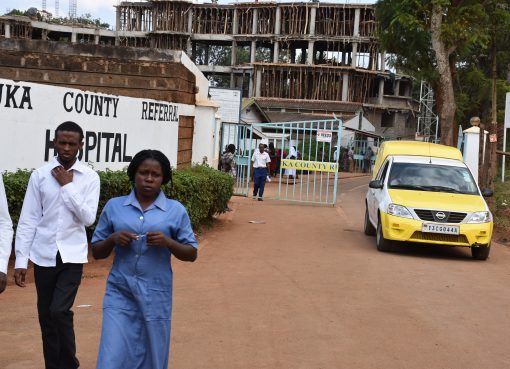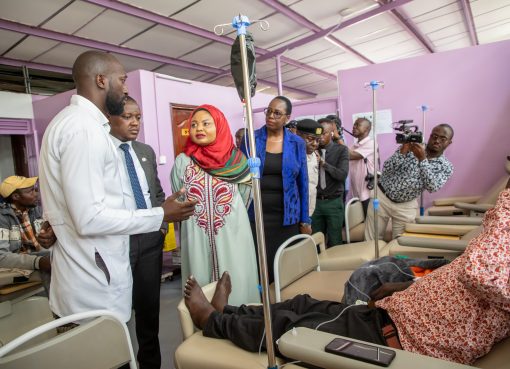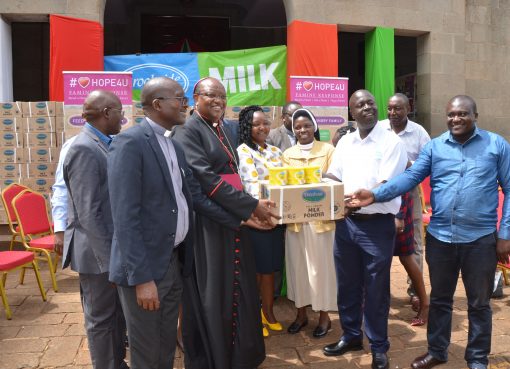The leather industry in Kenya is set to benefit from the construction of a Tannery and Leather Factory at Ewaso Ngiro area in Narok South.
Livestock farmers within Narok, Nakuru, Bomet, Migori, South Nyanza and Northern Tanzania as well as other parts of the country will benefit from the project by selling animal skins at the tannery after slaughtering their animals.
The Mega Tannery and Leather Factory construction that is still ongoing is estimated to cost over Sh. 1.4 billion when complete with phase one of the project that involved the construction and installment of the machines to the tannery to a tune of Sh. 900 Million being complete and operational.
The project which is funded by the government at a cost of over Sh. 1.4 billion through Ewaso Ngiro South Development Authority (ENSDA) is now partly operational and is awaiting official commissioning.
The project will create 300 jobs directly and a further 10,000 indirectly and help create wealth for the local communities after the completion of the Tannery processing plant in Narok becomes fully operational.
The development of Tannery processing plant in Narok is set to become a major economic boost to the country and improve the living standards of livestock rearing communities in the region due to its strategic location to the world famous Maasai Mara Game Reserve.
Livestock farmers in Narok and the entire South Rift can now sigh with relief after a Tannery and Leather Factory that was under construction at Ewaso -Nyiro area in Narok County started its operations, albeit on pilot basis.
The Ewaso Ngiro South Development Authority (ENSDA) Acting Managing Director Engineer Peter Bwogero says the factory is currently doing 4,000 tons of hides and skins per year at this stage and has currently employed close to100 people but will employ 300 people when fully operational.
It will be able to process over two million tons of hides and skins yearly when fully operational.
“We have a big demand for leather products in this country, in Western region alone, we have a shortage of over 40million pairs of footwear alone and we are targeting this region,” he said.
The Acting MD said currently they have a market for leather products in Nairobi and will be targeting other regions of the country and beyond when the factory is fully operational.
Bwogero says in future, they intend to train and empower young people and women to establish leather cottages in the region where they will utilize products from the factory to make products that will earn them a living.
Engineer Bwogero said they were now training hides and skin producers at various abattoirs in the region on best practices on how to handle this raw material in order to produce the best quality hides and skins. He estimates this will cost a further Sh. 700million.
“We are also training farmers on the best farming and animal handling practices in order to produce quality hides and skin,” He says adding that Narok County was known to produce the worst quality hides and skins due to poor farming and animal handling and the cultural practice of branding their animals according to clans and families, which has brought a major challenge to the factory`s operations, forcing them to source for the hides and skins from far.
The tanning factory is a major achievement as Manufacturing is one of the four pillars the Jubilee government as it targets economic growth.
Bwogero says “This is the largest leather factory in Kenya and it will be a game-changer for local livelihoods and the economy of the region.”
According to Bwogero over 75 per cent of the water used in the tannery is recycled making the entity environmental friendly, because its waste water is purified and taken back as freshwater by the factory staff and locals.
In the leather industry, the factory is set to produce leather products like leather jackets, shoes, bags while the government targets to produce over 20 million pairs of shoes by 2022 from this factory, while increasing export revenue in the industry to over Sh. 50 billion in the next five years.
ENSDA has partnered with Leather Development Council, Kenya Investment Authority, Export Processing Zone and Ethiopia who are the major competitor in the industry in Africa to provide a market for the leather products internationally.
From this project the farmers in Narok who have been selling their hides and skins at a throw-away price to brokers and earning as low as Sh.180 million annually could earn as much as over Sh.500 million annually if proper hide and skin handling practices are observed to uphold the quality.
The tannery is seen as viable industry in the country considering that livestock is a key sector to Kenya’s economy contributing about 12 per cent of Gross Domestic Product (GDP) or 40 per cent of the agricultural GDP while employing 50 per cent of agricultural labour force in the country.
Statistics from the Agriculture Ministry indicate Kenya has over 18 million head of cattle of which over 4 million are exotic, the rest (about 14 million) are indigenous with most animals being reared for milk and meat.
Over 27 million goats, over 17 million sheep and close to 3million camels, not to mention poultry and other small livestock like rabbits are reared with more than 60 per cent of this livestock farming in Kenya being done in semi-arid and arid parts of the country where most of the farmers are pastoralists.
Livestock rearing in Narok is one of the main economic activities supporting the majority of rural household`s livelihoods in food security, employment and income generation. The major livestock species reared comprises of cattle, sheep and goats, poultry and bees.
Narok County on its part has a Livestock population of over 1.2million beef cattle, over 300,000 dairy cows, over 1.6 million sheep and close to 1million goats.
Skins and hides are some of the by-products when livestock are slaughtered but most of them may go unutilized when there is no firm to use it as a raw material.
By Kevin Bogita





